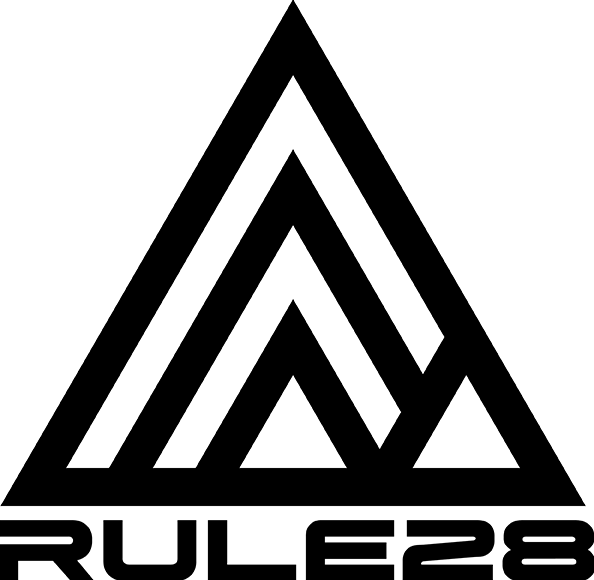Performance Nutritionist, Alice White breaks down how to structure the your nutrition plan.
You are all set to start the new training block, bike’s ready, strength and performance sessions are planned but how do you eat and drink to maximise your performance both on and off the bike. This article will go through how to build your nutrition to get the most out of your key sessions, the importance of fat as a macronutrient for the body and how protein should be thought about as an endurance style athlete.
Calculating Your Energy Requirements
First things first, understanding your energy requirements is the foundation when building a nutrition plan. To maintain your current composition and supply the body with adequate fuel for training, your energy expenditure needs to be balanced with energy supply. This is known as energy balance. Energy balance (energy in = energy out) is a dynamic process, where adjusting one component of the equation, such as training load, can affect the biological and physiological response of another component, sometimes in unpredictable ways1. Therefore, being in the know and staying on top of your nutrition to support training and life demands is an important factor to thrive.
Everyone has a different energy requirement that is influenced by internal factors such as genetics, hormonal, or metabolic, as well as external factors, such as behaviour, social and environmental inputs2. Therefore, everyone has their unique requirements. Accurately measuring energy intake and expenditure is particularly challenging. If you’ve ever compared your data from a training ride between different devices and platforms, they all produce different information, and this is no different when it comes to calories burnt. For your output, a calibrated power meter will provide precise and accurate but even this is still subject to inaccuracies. As for logging calories, there are apps available that will help with this but not all of them are user friendly or accurate. However, no matter how good the app, these tools are only as good as the user and the information the user inputs. Errors with portion sizes, food weight, untracked snacks and other issues, it’s easy to see how inaccuracies can creep in. However, for many people, the process of tracking their intake can be beneficial to work out baseline figures. Working out your estimated energy expenditure for a baseline to go off is a good exercise if you have no idea what your intake should look like. The factors used to estimate your resting metabolic rate (RMR) for your height, weight, and gender plus your general day to day active, whether you are sedentary or active in your job, plus your physical activity (training etc) energy demand. These three components make up your total daily energy expenditure (TDEE) and balancing this with your intake is key to establishing your nutrition for performance. Use the information you get as an approximate figure (or an online calculator) but don’t try and eat or exercise down to the precise calorie. Track your weight and body composition and use changes in that over time to then tweak your diet and training.
Fueling with Carbohydrates
For any athlete, or general person, carbohydrates are our main source of energy for the majority of exercise or movement. This is especially true for endurance athletes. How we approach carbohydrates every day will affect our ability to digest, absorb and most importantly, utilise them whilst training and racing. Once you have worked out your energy requirements, the next step is to focus on your carbohydrates. For a every ride, the carb requirements will vary depending on the intensity of the ride, the training phase and how close to competition you are. At the beginning of each training week, look ahead at your schedule and pick out your key sessions during the week. For example, an interval session on a Thursday evening and long ride on Saturday are more important to focus your nutrition around than an easy hour or a zone 2 training session. This shows which sessions are most important to properly fuel for and those which can be used for nutrition adaptation, this is known as micro-cycling. On training rides, if you are trying to reduce body fat and change composition, you will need to aim for the lower end of these suggested intake ranges and pay close attention to ride intensity as your fat stores will become your main supply of energy and the body can only access these at relatively low intensities.
Key workouts identified each week should be fuelled well to help maintain intensity and support workout quality. Depending on your preference you can fuel with a combination of whole foods, sports supplements and or sports drinks which can also double up to start training the stomach so race day nutrition. On the other hand, an easy hour is something that could be performed without consuming any carbs on the bike to stimulate adaptation to utilise fat over carbohydrates if you are in a training block. Whereas when closer to competition these training rides should be used to train the stomach for your nutrition strategy. You might not have thought to much about it but training your digestive system to tolerate more fuel on the bike and at higher intensities is as important as your training program itself. If you don’t consider your fuelling in training and give your gut the chance to adapt, when you try and increase fuelling or changing it at an event, you are bound to suffer some gastrointestinal (GI) distress.
As a rough start point to build your own nutrition plan, on a general training day an athlete should aim for 4-6g per kg of body weight spread throughout the day. This can be increased to 6-8g per kg body weight on higher volume or key training days. These recommendations should be specifically focused around training times with more carb focus 2-3 hours before, during and an hour after your ride instead of during your less active time throughout the day, eg sat at work.
The Role of Protein for Endurance Athletes
It’s not all about carbohydrates. The importance of protein for strength and power athletes has been accepted for many years. More recently its role in supporting endurance training has come to light and been fully appreciated. It is commonly known, for strength and power athletes, the protein is important for muscle growth, however, for endurance athletes, it’s used for both muscle repair and producing more mitochondria3. Mitochondria are the powerhouses of your cells and are where energy is produced. Protein is not only important for repair and recovery from training but also important for protecting and preserving your lean tissue during periods of hard training or during negative energy balance (a calorie deficit) for reduction of fat mass.
Muscle protein synthesis is stimulated as a response to exercise as well as the ingestion of <20g of protein. Therefore, even endurance athletes should be looking to consume 20-40g of protein every 3-4 hours to protect lean tissue mass and facilitate the mitochondrial protein adaptation from endurance training. To preserve or increase lean muscle mass during training blocks or a negative energy balance try to consume 1.5 - 2 g/kg body mass per day of protein. This should ideally be spread throughout the day, consuming 20- 40g, or the equivalent of 0.3g/kg body weight, every 3-4 hours. Focus on protein in every meal and a couple of snacks throughout the day to achieve this. For instance, if you’re having breakfast 2 hours before heading out on a 4-5 hour training riding, you’ll need to include a minimum of 20g of protein at breakfast and to top up at least once while on the bike to prevent muscle breakdown. If you are stopping for a break at a coffee shop this can be achieved with real foods alternatively you can use sport supplements, especially if you aren’t stopping during your ride. After a long ride or high training intensity it important to repair with protein as much as it is to refuel with carbohydrates, especially to encourage positive protein turnover, consuming 30g of protein soon after training has been shown to have suitable stimulation of muscle protein synthesis4.
Putting it All Together
All in all, the foundations of nutrition start with working out your personal requirements and ends with putting the detail into practise around your training program to best support you and your goals on the bike.
References
- Hall K, Sacks G, Chandramohan D et al. Quantification of the effect of energy imbalance on bodyweight. Lancet, 2011.
- Stensel D. Exercise, appetite and appetite regulating hormones: implication for food intake and weight control. Annals Nutrition Metabolism, 2010.
- Wilkinson S, Philips S, Atherton P et al. Differential effect of resistance and endurance exercise in the fed state of signalling molecule phosphorylation and protein synthesis in humans. J Physiology, 2008.
- Areta J, Burke L, Camera D, et al. Reduced resting skeletal muscle protein synthesis is rescued by resistance exercise and protein ingestion following short-term energy deficit. Am J physio Endocrinol Metab. 2014.






Share:
Caffeine - A Deep Dive
1 comment
Great article, however I would recommend someone with a knowledge of proper grammar edit it. Was this article translated to english from another language?